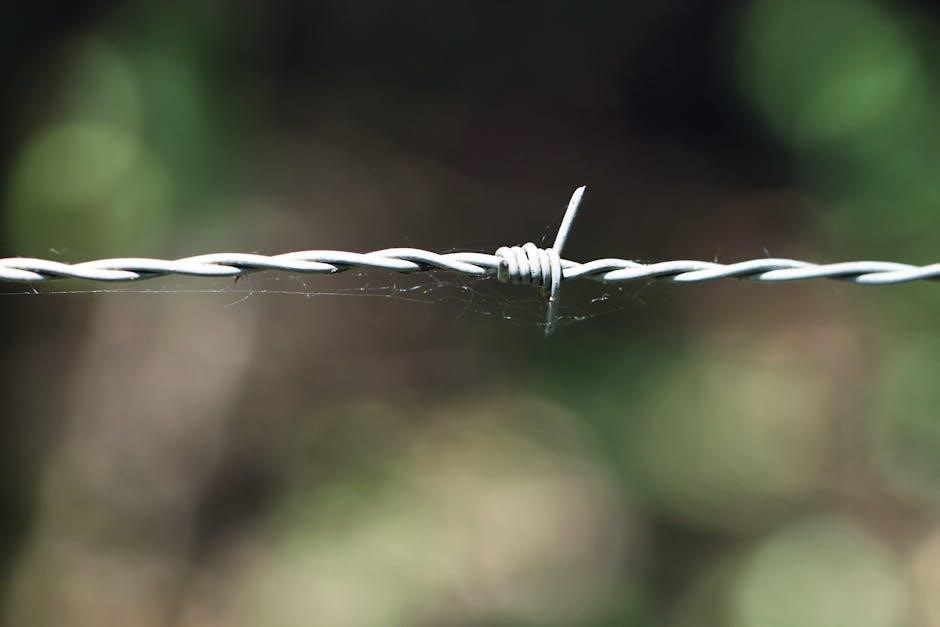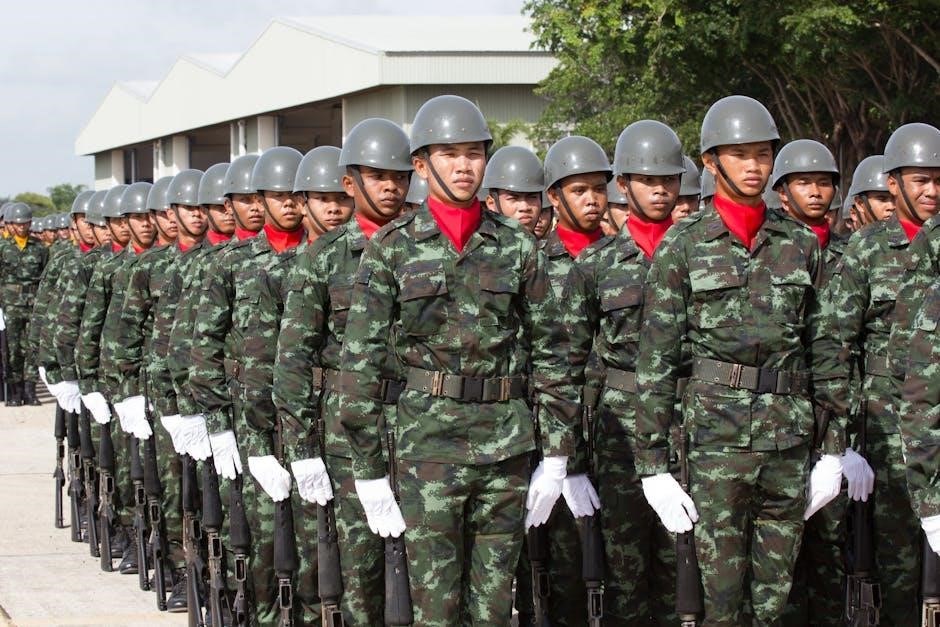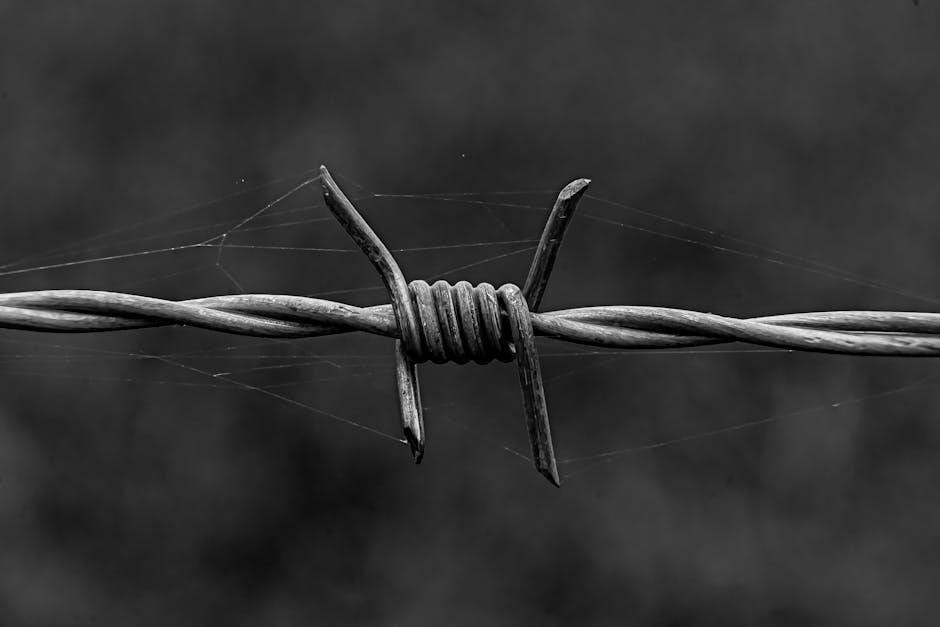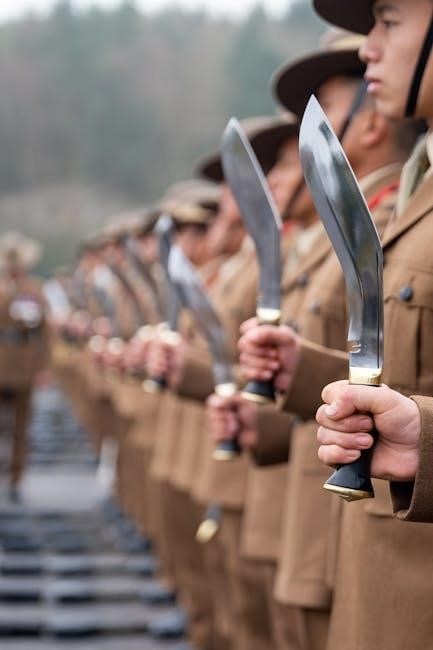Defensive line drills are essential for developing technique, strength, and game readiness in football. They focus on improving pass rush, run defense, and tackling efficiency through structured exercises.
1.1 Importance of Defensive Line Drills in Football
Defensive line drills are crucial for enhancing technique, strength, and reaction time; They improve pass rush efficiency, run defense, and tackling skills, ensuring linemen can dominate at the point of attack. Effective drills also reduce injury risks and build discipline, making the defensive line a cohesive and formidable unit on the field.
1.2 Overview of Key Techniques and Objectives
Defensive line drills focus on mastering techniques like fighting double teams, pass rush moves, and gap control. Key objectives include improving explosion off the snap, hand placement, and leverage. Drills aim to enhance reaction time, shedding blocks, and pursuing the ball carrier effectively, ensuring linemen can execute their roles in various game situations.
Fundamental Defensive Line Techniques
Mastering stance, explosive get-off, hand placement, and leverage is crucial. These techniques form the foundation for effective pass rushing, run defense, and block shedding in football.
2.1 Proper Stance and Alignment
A proper defensive line stance ensures balance and explosiveness. Feet should be shoulder-width apart, knees bent, and back straight. Hands are placed on knees or thighs for optimal leverage. Align head-up, eyes forward, and weight slightly forward. This setup allows for quick reaction to the snap and effective execution of techniques.
2.2 Explosive Get-Off and First Step Mechanics
Explosive get-off is critical for defensive linemen to gain an advantage. The first step should be quick and powerful, driving off the ball with legs. Hands should strike upward to create separation. Proper footwork and body positioning ensure balance and momentum, allowing linemen to react swiftly to the snap and execute their assignment effectively.
2.3 Hand Placement and Leverage
Proper hand placement is vital for defensive linemen to generate force and control. Hands should strike with palms up, thumbs inward, and elbows close to the body. Leverage is achieved by maintaining a low center of gravity and driving through the legs. This technique allows linemen to shed blocks, create separation, and dominate at the point of attack effectively in both pass and run scenarios.
Pass Rush Drills
Pass rush drills focus on developing techniques to pressure quarterbacks. They include basic moves like speed rushes and advanced techniques like spin moves, enhancing explosiveness and agility for effective sacks and disruptions.
3.1 Basic Pass Rush Techniques
Basic pass rush techniques emphasize proper stance, explosive get-off, and hand placement. Drills focus on speed rushes, leveraging footwork, and maintaining balance. Players learn to engage offensive linemen effectively, using agility and strength to create pressure. These foundational skills are refined through repetition and structured exercises to enhance overall pass-rushing efficiency and effectiveness during games.
3.2 Advanced Pass Rush Moves (5-7-8 Techniques)
Advanced pass rush moves, including the 5-7-8 techniques, involve intricate footwork and hand placement to outmaneuver blockers. The 5 technique focuses on a wide rush, while the 7 technique emphasizes a tighter angle. The 8 technique combines speed and agility, allowing linemen to adapt to various blocking schemes and create consistent pressure on the quarterback during game situations.
3.3 Loop and Contain Drills
Loop and contain drills are essential for teaching defensive linemen to rush the quarterback while maintaining edge containment. These drills involve looping around blockers and transitioning into pass rush moves. Key elements include staying low, using hand technique, and reacting to the ball. These exercises help linemen balance pressure and responsibility, ensuring effective pass rush and containment execution in game situations consistently.
Run Defense and Gap Control
Run defense drills focus on reacting to the snap, reading blocks, and maintaining gap integrity. Players learn to shed blockers and pursue the ball carrier effectively.
4.1 Reacting to the Snap and Reading Blocks
Reacting to the snap and reading blocks is crucial for defensive linemen. Proper stance and explosive get-off enable quick reactions. Linemen must read blocking schemes, using hands to control gaps and stay balanced. Recognizing double teams and traps allows for effective counter moves. This skill is vital for maintaining gap integrity and stopping the run.
4.2 Maintaining Gap Integrity

Maintaining gap integrity is critical for defensive linemen to prevent offensive breakthroughs. Proper foot placement, hand positioning, and balance ensure control; Drills focus on reacting to blocks without overcommitting, allowing linemen to stay in their assigned gaps. This discipline is key to stopping runs and pressuring quarterbacks effectively during games.
4.3 Shedding Blocks and Pursuing the Ball Carrier
Shedding blocks requires precise hand placement and explosive footwork to disengage from blockers. Drills focus on using leverage and technique to separate quickly. Pursuing the ball carrier involves maintaining proper angles and speed to tackle effectively. These skills ensure defensive linemen can dominate at the point of attack and make impactful plays consistently.

Tackling and Pursuit Drills
Tackling and pursuit drills refine defensive linemen’s ability to secure stops and chase down ball carriers. Techniques include proper form, angles, and speed to ensure effective tackles and ball recovery in game situations.
5.1 Proper Tackling Technique for Defensive Linemen
Proper tackling technique is crucial for defensive linemen to ensure safety and effectiveness. Emphasize keeping the head up, exploding through the ball carrier with legs, and leading with the shoulder. Drills focus on securing tackles, maintaining balance, and avoiding missed opportunities. Mastery of these fundamentals enhances defensive performance and reduces injury risks in game situations.
5.2 Pursuit Angles and Speed
Pursuit angles and speed are vital for defensive linemen to effectively chase down ball carriers. Drills like cone exercises and ladder drills improve agility and acceleration. Coaches emphasize proper angles to cut off escape routes and maintain top speed while staying disciplined in pursuit paths, ensuring defensive linemen can quickly close gaps and make impactful plays.
5.3 Forcing Fumbles and Securing the Ball
Defensive linemen are taught to attack the ball upon contact, using techniques like strip moves to dislodge it. Drills emphasize proper tackling and hand placement to force fumbles. Securing the ball after recovery is also practiced, ensuring possession stays with the defense. These skills enhance turnover creation and are critical for defensive success in game situations.

Defensive Line Drills for Reacting to Blocking Schemes
These drills teach defensive linemen to recognize and react to various blocking schemes, such as double teams and pulling linemen, improving their ability to anticipate and counter in game situations.
6.1 Recognizing Double Teams and Combinations
Defensive linemen must quickly identify double teams and combination blocks to maintain gap integrity. Drills focus on proper footwork, hand placement, and leverage to shed blockers effectively. Emphasizing staying low and using hands to control blockers helps players react decisively and maintain their assignment. These techniques are crucial for countering various blocking schemes in game situations.
6.2 Reacting to Pulling Linemen and Traps
Defensive linemen must quickly recognize and react to pulling linemen and trap blocks. Drills focus on staying low, using hands to control blockers, and maintaining lateral movement. Emphasizing gap discipline and quick decision-making helps players counter these schemes effectively. Proper technique ensures defenders can shed blockers and pursue the ball carrier without compromising their assignment or the defensive structure.

6.3 Adjusting to Screen Plays and Misdirection
Defensive linemen must quickly identify screen plays and misdirection, staying disciplined in their assignments. Drills teach players to recognize screens and react decisively, ensuring they maintain gap integrity and avoid overcommitting. Proper footwork and hand placement are emphasized to counter these tactics effectively, keeping defenders in position to disrupt the play and prevent offensive success.

Advanced Defensive Line Drills
Advanced drills focus on refining techniques like two-man sled exercises, ladder agility drills, and cone exercises for speed and direction changes, enhancing overall performance and reaction skills.
7.1 Two-Man Sled Drills with Pass and Run React
Two-man sled drills simulate game scenarios, focusing on reaction to pass and run plays. Defensive linemen engage the sled, using hand techniques and footwork to maintain balance. Drills enhance agility, strength, and situational awareness, preparing players for dynamic game situations while improving reaction time and overall performance under pressure.
7.2 Ladder Drills for Footwork and Agility
Ladder drills enhance footwork, agility, and change of direction for defensive linemen. Players perform exercises like carioca drills and high knees through the ladder, improving quickness and balance. These drills simulate field movements, helping linemen navigate blockers and pursue the ball with precision and speed, essential for both pass rush and run defense scenarios.
7.3 Cone Drills for Change of Direction and Speed
Cone drills are designed to enhance a defensive lineman’s agility, speed, and ability to change direction quickly. Players weave through cones in various patterns, such as zigzag runs or shuttle drills, to improve reaction time and lateral movement. These exercises mirror game situations, helping linemen evade blockers and pursue the ball carrier with precision and explosiveness.

Defensive Line Drill Progression
Defensive line drill progression involves moving from basic techniques to advanced exercises, ensuring players master fundamentals before tackling complex drills, promoting skill development and adaptability in game scenarios.
8.1 Building from Basic to Complex Drills
Defensive line drills progress from fundamental techniques like stance, alignment, and get-off to advanced exercises such as pass rush moves and two-man sled drills. This structured approach ensures players master basic skills before advancing, building confidence and competence for game-day scenarios while minimizing errors and enhancing overall performance effectively.
8.2 Incorporating Game Situations into Drills
Incorporating game situations into drills simulates real-game pressures, enhancing decision-making and reaction time. Drills mimic scenarios like third-and-long pass rushes or goal-line stands, teaching players to read blocks and react instinctively. This approach improves situational awareness, ensuring defensive linemen are prepared for critical moments, ultimately elevating their performance under game conditions.
8.3 Maximizing Repetition and Muscle Memory
Repetition is crucial for building muscle memory in defensive linemen. Consistent practice of drills like pass rushes and gap control ensures techniques become second nature. Through repeated execution, players develop instinctive reactions, enabling faster decision-making and precise execution during games. This focus on repetition enhances performance and reliability under pressure.
Safety and Injury Prevention in Drills
Safety is crucial in defensive line drills. Proper warm-ups, joint protection, and equipment checks ensure injury prevention. Coaches must emphasize correct techniques to avoid overuse injuries and stress-related harm.

9.1 Proper Warm-Up and Cool-Down Routines
A proper warm-up includes dynamic stretching, high knees, and butt kicks to activate muscles. Cool-down involves static stretches for hamstrings, quads, and hip flexors to improve flexibility and reduce soreness. Hydration and recovery techniques, like foam rolling, are essential to prevent injuries and enhance performance in defensive line drills.
9.2 Protecting Joints and Preventing Overuse Injuries

Proper warm-ups and cool-downs are crucial for joint protection. Defensive linemen should focus on maintaining proper technique to reduce strain on knees and shoulders. Hydration, balanced nutrition, and adequate rest help prevent overuse injuries. Incorporating strength training for joint stability and using supportive gear like joint sleeves can further mitigate risks during intense drills.
9.3 Ensuring Proper Equipment and Field Conditions
Proper equipment, including helmets, pads, and footwear, is essential for safety. Fields must be well-maintained, with even surfaces and clear of debris. Regular inspections ensure goalposts, sleds, and other equipment are secure. Coaches should enforce safety protocols, such as hydration breaks and weather-related precautions, to prevent injuries and ensure optimal training conditions for defensive linemen.
Consistent practice of defensive line drills enhances technique, strength, and game performance. These exercises are vital for building a formidable defense and ensuring player safety through proper execution.
10.1 Recap of Key Defensive Line Drills
Key defensive line drills include pass rush techniques, gap control exercises, and tackling drills. These exercises focus on improving explosiveness, hand placement, and reaction time. Drills like sled work, ladder agility, and cone exercises enhance footwork and agility. Proper execution of these drills ensures effective performance in both pass and run defense scenarios, building a strong defensive foundation.
10.2 Continuous Improvement and Practice
Continuous improvement is achieved through consistent practice and repetition of defensive line drills. Players should focus on refining techniques, increasing strength, and enhancing agility. Regular drills help build muscle memory, ensuring skills are applied effectively in game situations. Coaches emphasize progression from basic to advanced exercises, fostering mastery and adaptability in various defensive scenarios.
10.3 The Role of Defensive Line Drills in Building a Strong Defense
Defensive line drills are crucial for building a strong, cohesive defense. They enhance pass rush, gap control, and tackling skills, while improving reaction time and physical strength. Consistent practice fosters teamwork and coordination, enabling linemen to dominate at the point of attack and create opportunities for the entire defensive unit to succeed in game situations.

Additional Resources
Discover comprehensive defensive line drills PDF guides, online tutorials, and expert forums offering detailed techniques, coaching tips, and practice drills to enhance your football training regimen effectively.
11.1 Recommended PDF Guides for Defensive Line Drills
Explore top-rated defensive line drills PDF guides offering detailed techniques, coaching tips, and practice plans. These resources cover pass rush, run defense, and tackling, providing coaches and players with structured exercises to enhance performance. Many guides include drills for improving footwork, hand placement, and reaction time, ensuring comprehensive skill development for defensive linemen at all levels.
11.2 Online Tutorials and Coaching Tips
Access online tutorials and coaching tips to master defensive line techniques. Websites like YouTube offer video guides on pass rush moves, footwork drills, and hand placement. Expert coaches share insights on improving explosiveness and reaction time. These resources provide step-by-step instructions and real-game examples to enhance player development and coaching strategies effectively.
11.3 Community Forums and Expert Advice
Engage with community forums to connect with coaches and players. These platforms offer valuable insights, shared drills, and tips. Experts like Karl Dunbar provide guidance on advanced techniques, while players such as JJ Pegues share their experiences. Participate in discussions to gain personalized advice and refine your defensive line strategies effectively through collective knowledge and expertise.
